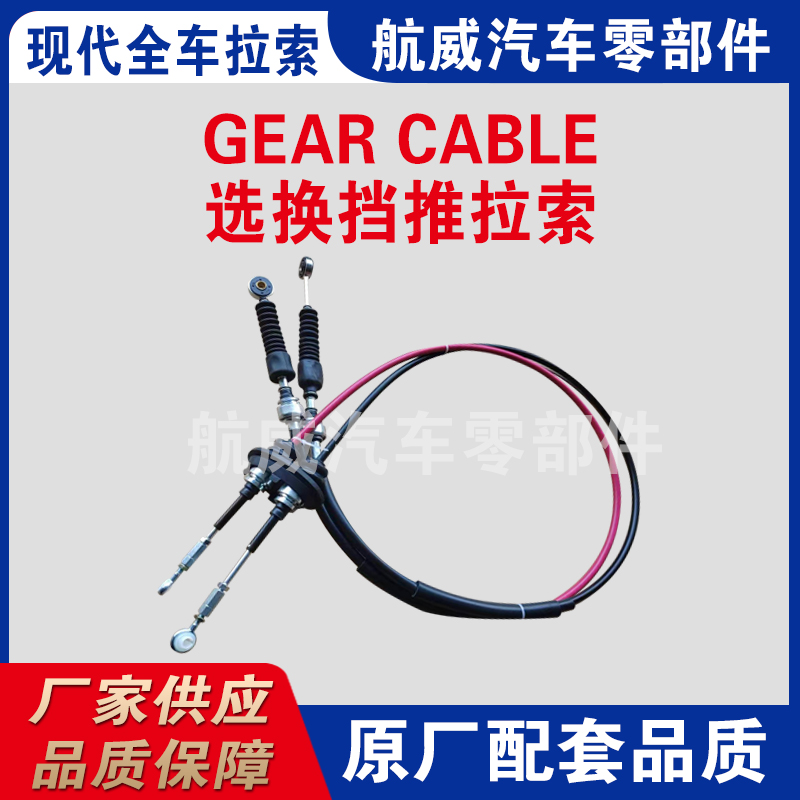rear handbrake cable
Understanding Rear Handbrake Cables Importance and Maintenance
The rear handbrake cable, often overlooked by vehicle owners, is a vital component of a car's braking system. Functioning as a mechanical link between the handbrake lever inside the vehicle and the rear brake calipers or drums, this cable plays a crucial role in ensuring safe parking and emergency braking. In this article, we will explore the significance of the rear handbrake cable, common issues that may arise, and maintenance tips to ensure its longevity and efficiency.
The Role of the Rear Handbrake Cable
The rear handbrake, also known as the emergency brake or parking brake, provides additional security when a vehicle is parked, especially on inclined surfaces. By engaging the handbrake, drivers ensure that the vehicle remains stationary. The rear handbrake cable is responsible for transmitting the force from the handbrake lever to the brakes at the rear wheels. This mechanism is essential for preventing the car from rolling away, making it an integral part of automotive safety.
Moreover, the handbrake can serve as an auxiliary braking system in emergencies. If the primary braking system fails, drivers can use the handbrake to slow down or stop the vehicle. Therefore, ensuring that the rear handbrake cable is in good working condition is paramount for both everyday driving and emergency situations.
Common Issues with Rear Handbrake Cables
Despite its importance, the rear handbrake cable can encounter various issues over time, often due to wear and tear or environmental factors. Some common problems include
1. Cable Fraying or Breaking Over time, constant use can lead to fraying of the cable. If a cable breaks, the handbrake will fail to engage, leading to potential safety hazards.
2. Corrosion Rear handbrake cables are typically exposed to moisture, dirt, and road salt, especially in regions with harsh winters. This exposure can lead to rust and corrosion, weakening the cable and affecting its performance.
3. Slack or Tension Issues Cables can stretch or lose tension, leading to a handbrake that does not hold adequately. This can result in the vehicle rolling when parked, posing a severe safety risk.
rear handbrake cable

4. Incorrect Installation If the rear handbrake cable is not installed correctly, it may not engage smoothly or could even get stuck, causing inadequate braking performance.
Maintenance Tips for Rear Handbrake Cables
To ensure the durability and effectiveness of rear handbrake cables, regular maintenance is essential. Here are some tips to keep them in optimal condition
1. Regular Inspections Periodically check the handbrake cable for signs of wear, fraying, or corrosion. Look for any rust or damage, especially if you live in a humid or wintery climate where road salt is prevalent.
2. Lubrication Some cables may benefit from occasional lubrication. This can help prevent rust and ensure smooth operation. However, avoid using too much lubricant, as this can attract dirt and debris.
3. Tension Adjustment If you notice that the handbrake does not engage as firmly as it should, it may be necessary to adjust the cable tension. Consult your vehicle's manual for specific instructions on adjusting the rear handbrake cable.
4. Professional Inspection If you're uncertain about the condition of your rear handbrake cable or if you encounter any issues, it’s wise to have a professional mechanic inspect the system. They can offer expert advice and perform any necessary repairs or replacements.
5. Avoid Overloading When parking, ensure that you do not overload the vehicle beyond its rated capacity. Excess weight can put additional stress on the handbrake system and lead to premature wear of the cable.
Conclusion
In summary, the rear handbrake cable is a crucial yet often neglected component of a vehicle's braking system. Its role in maintaining safety when parked and providing emergency braking cannot be understated. Regular maintenance, inspections, and timely replacements are essential to keep this component in excellent condition for optimal performance. By understanding and caring for your rear handbrake cable, you ensure not just your safety, but also the longevity and reliability of your vehicle. Remember, a well-maintained handbrake system is key to safe driving experiences.
-
Workings of Clutch Pipe and Hose SystemsNewsJun.04,2025
-
The Inner Workings of Hand Brake Cable SystemsNewsJun.04,2025
-
The Secrets of Throttle and Accelerator CablesNewsJun.04,2025
-
The Hidden Lifeline of Your Transmission Gear Shift CablesNewsJun.04,2025
-
Demystifying Gear Cables and Shift LinkagesNewsJun.04,2025
-
Decoding Clutch Line Systems A Comprehensive GuideNewsJun.04,2025
